Hidden Valley house in Arizona designed by Wendell Burnette is a ‘long pavilion for living’
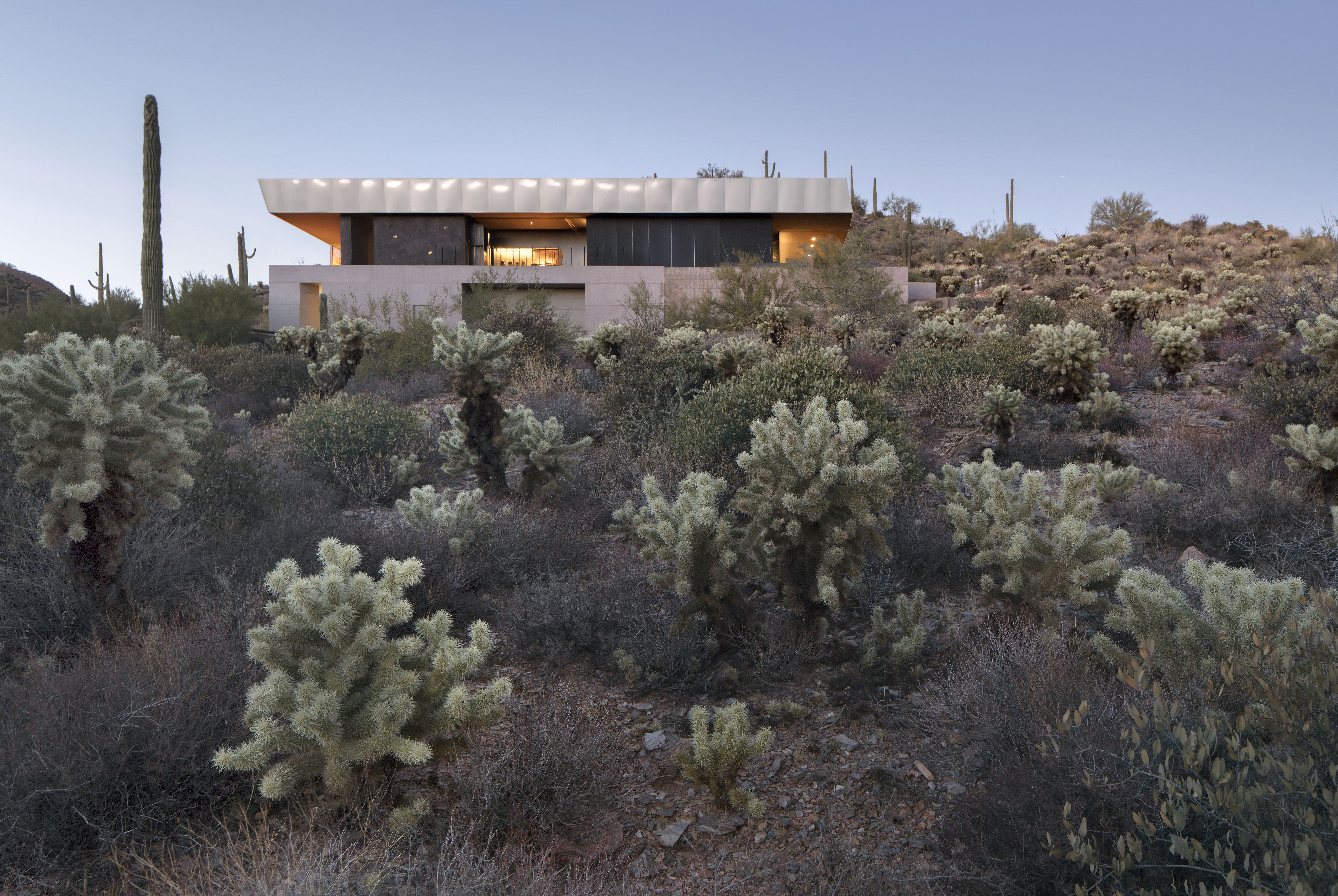
Sunken into a saguaro-studded knoll at Cave Creek in Arizona, this house by Wendell Burnette Architects, was designed to help its inhabitants pare their lifestyle back to basics.
The simple construction entails a concrete plinth, topped with a mighty canopy equipped with mechanicals, energy supplies and water storage for the house. The plinth follows the contours of the land developing into a ‘thick’ cave at its lower end, and a shaded terrace at its upper end.
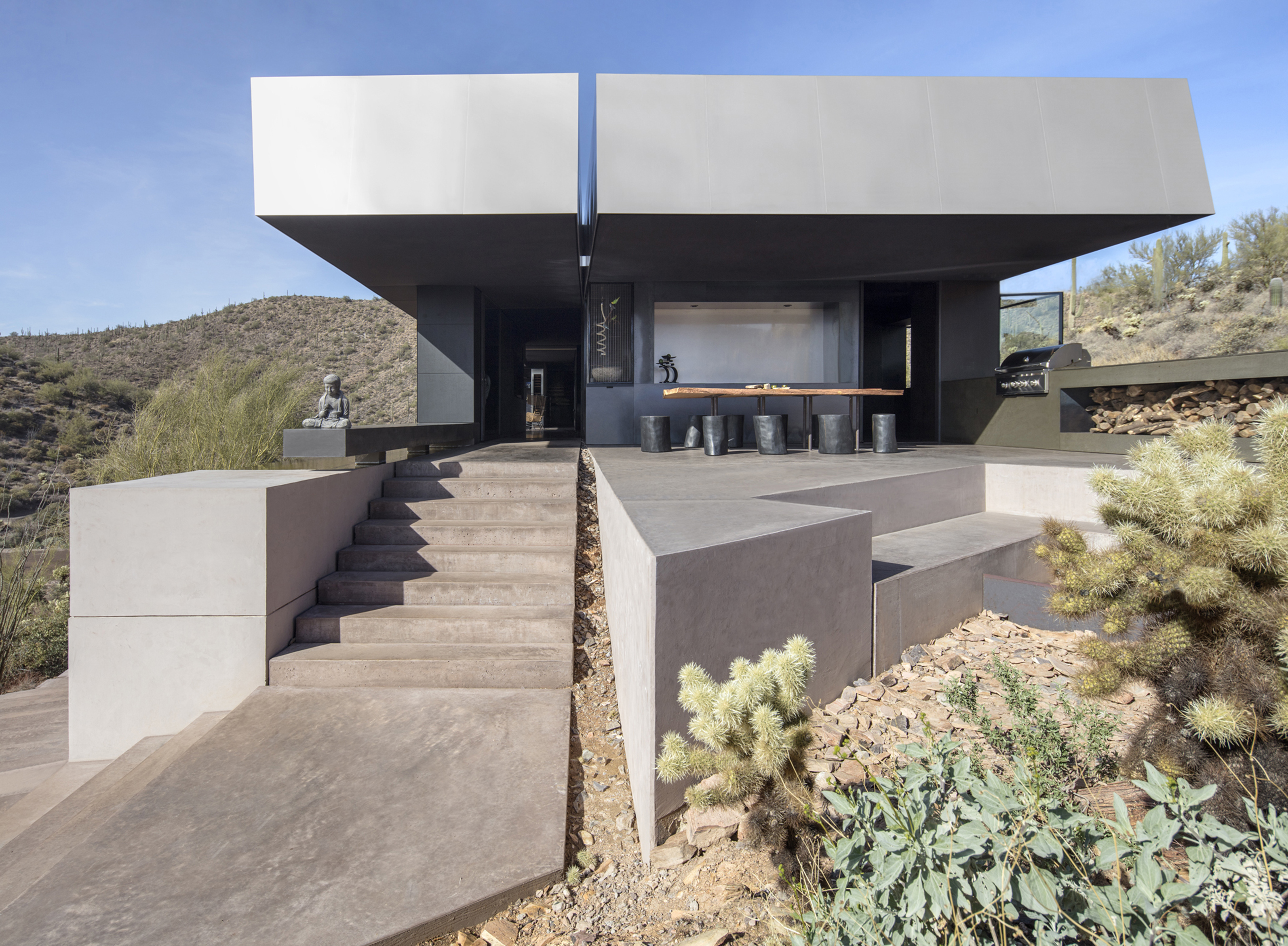
Entry to the house via a concrete stair that leads up to the concrete plinth.
The clients requested a home where they could live simply alongside their collection of animals – birds, Koi fish, Rhodesian Ridgebacks and cat. The plinth is two thirds indoor and one third outdoor, always covered to create a shady space for living within the landscape. The Phoenix-based architects describe the house as a ‘long pavilion for living’.
The upper exterior of the canopy is made of a deep mill finish stainless steel, which mirrors the landscape and sky with its smooth shape and softly reflective materiality. The underside of the canopy is however, lined with a black fabric scrim that absorbs the cool darkness of shadow and covers up the timber truss roof structure inside which the sound and thermal insulation is contained.
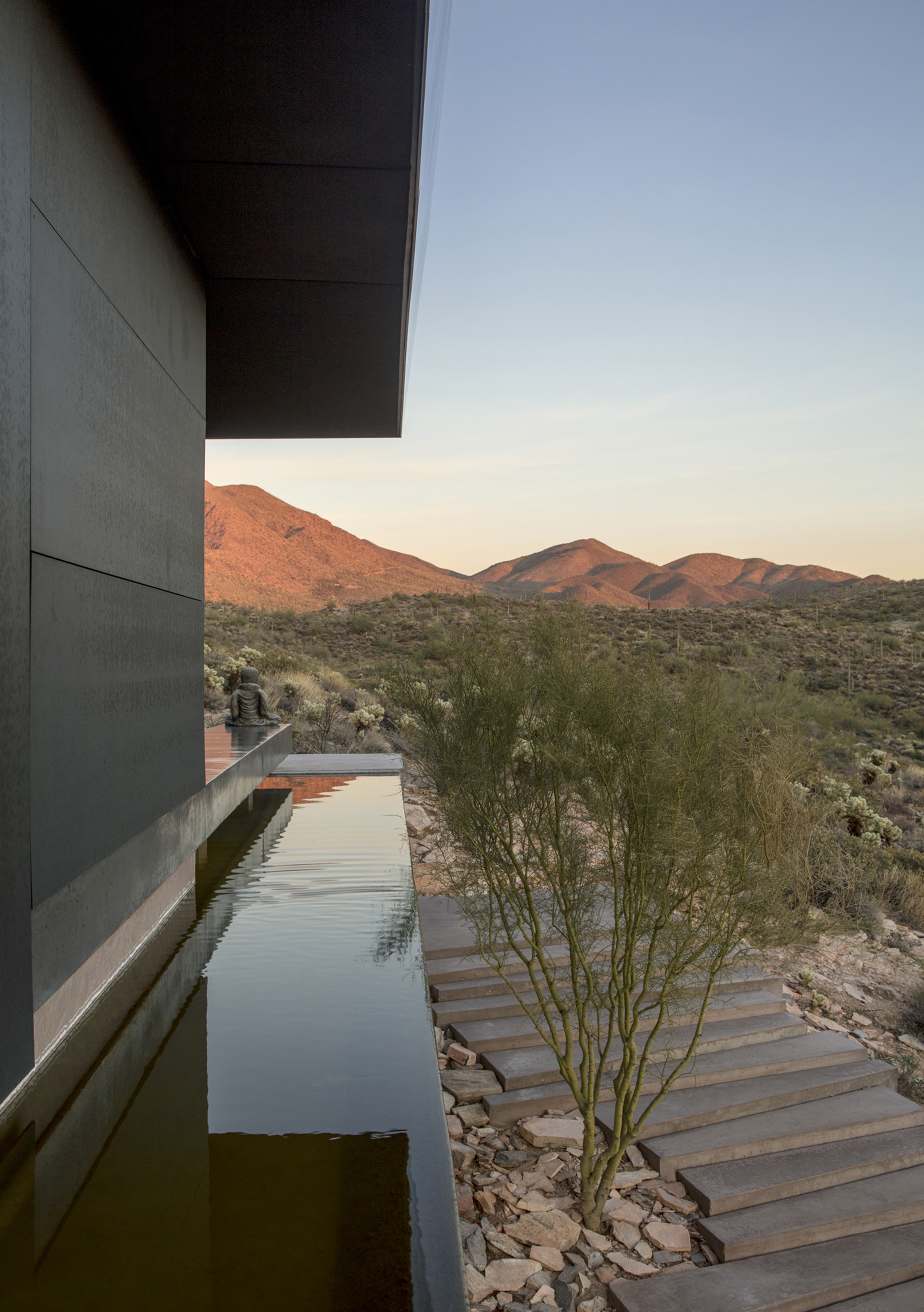
The house frames the surrounding mountainous landscape.
Interior architectural materials, defined by the simple central cores, include cold-rolled mill finish steel, ebonised sustainable MDF, three different dark finishes of highly sustainable resin-infused paper and a purple/black Wabi-Sabi stucco with vermiculite. These materials are lightweight, yet dense and feel protective in the desert landscape.
Positioned just high enough in the valley to enjoy the distant views of the Phoenix Valley floor, surrounding mountain ranges and reverse sunsets on the Continental Mountain, the house also frames close-ups of its neighbouring ecology and geology such as the teddy bear cholla cactus field growing out of a prominent outcrop of pinkish-red shale stone noticed by the architects along the eastern edge of the site.
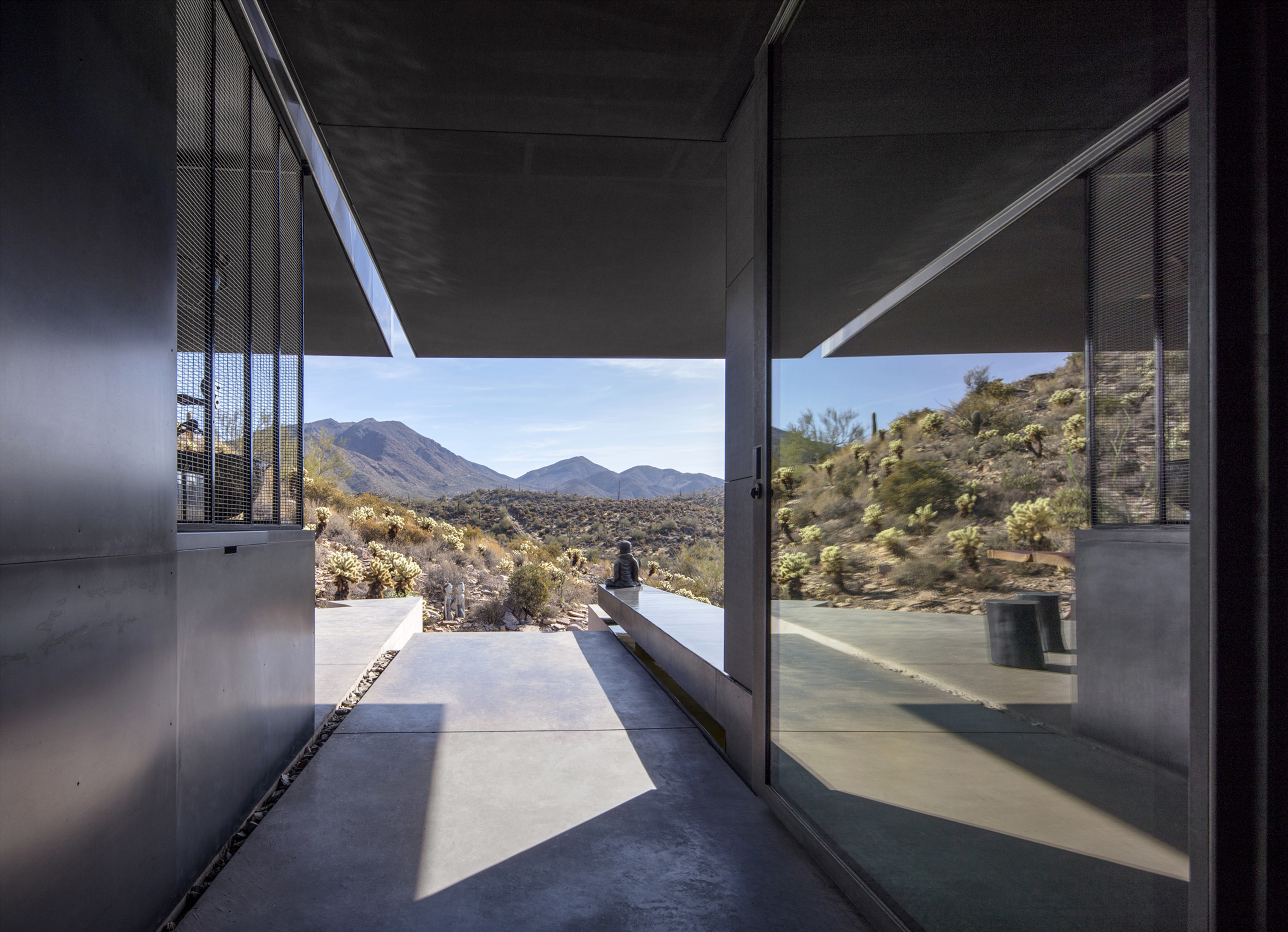

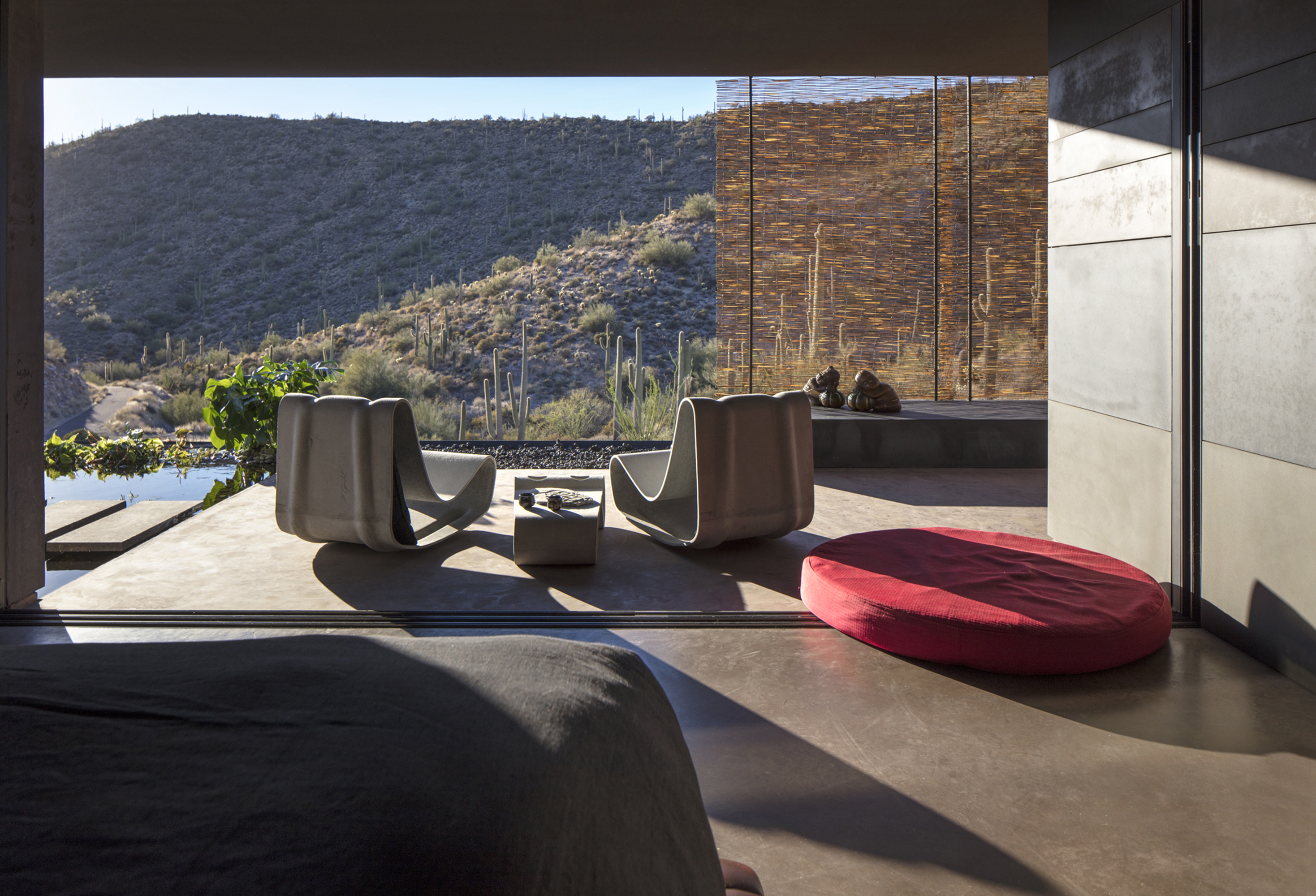
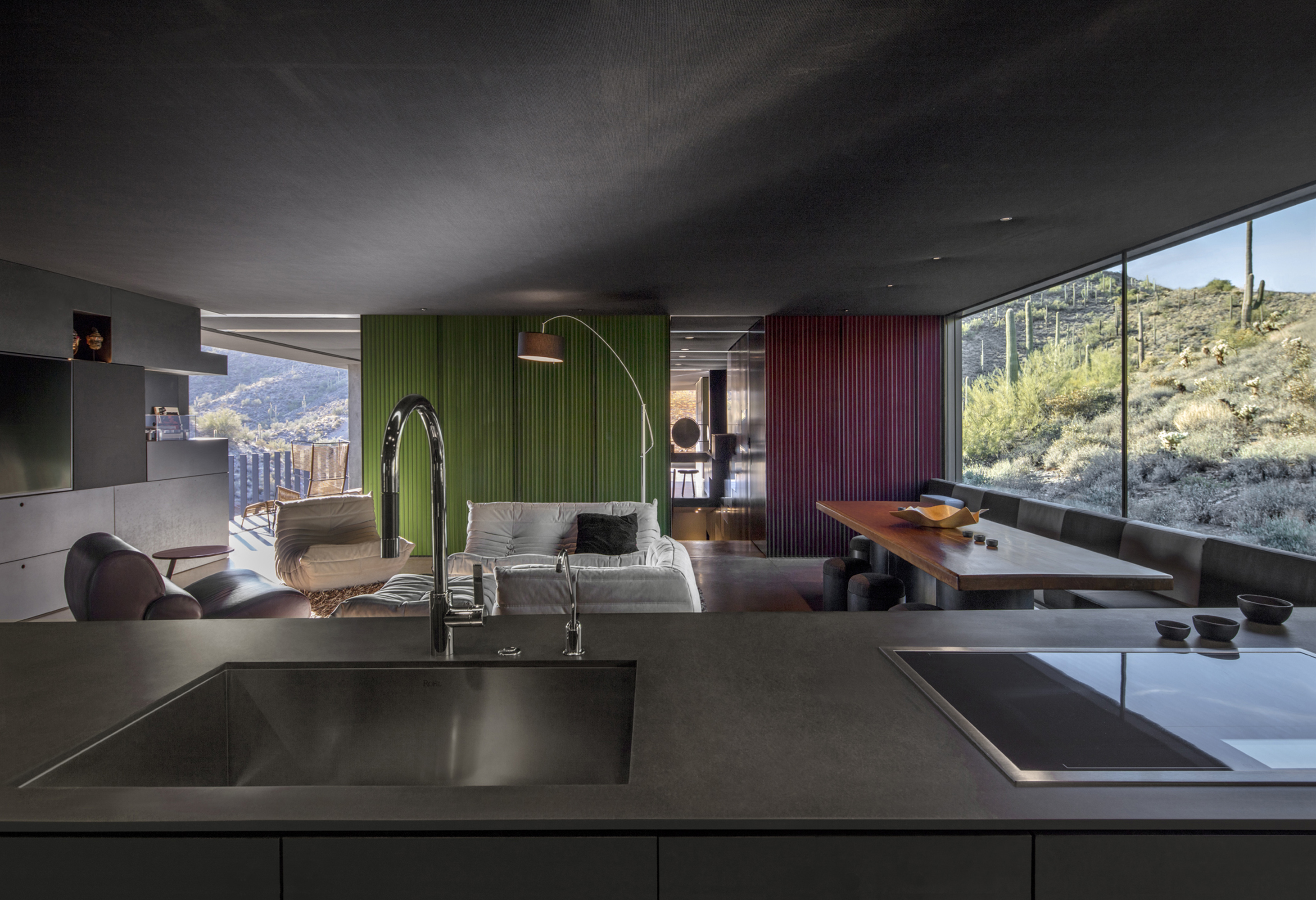
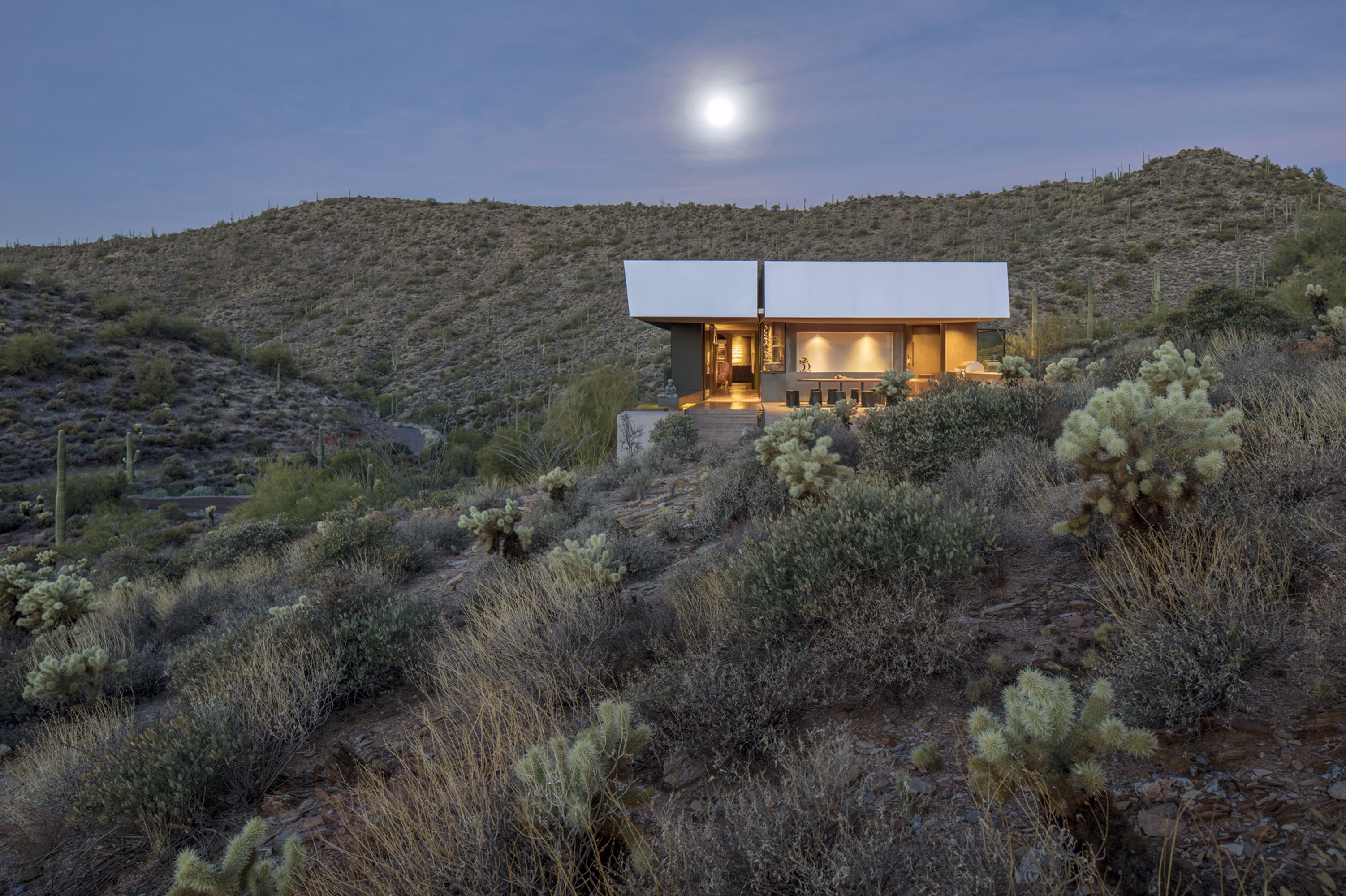
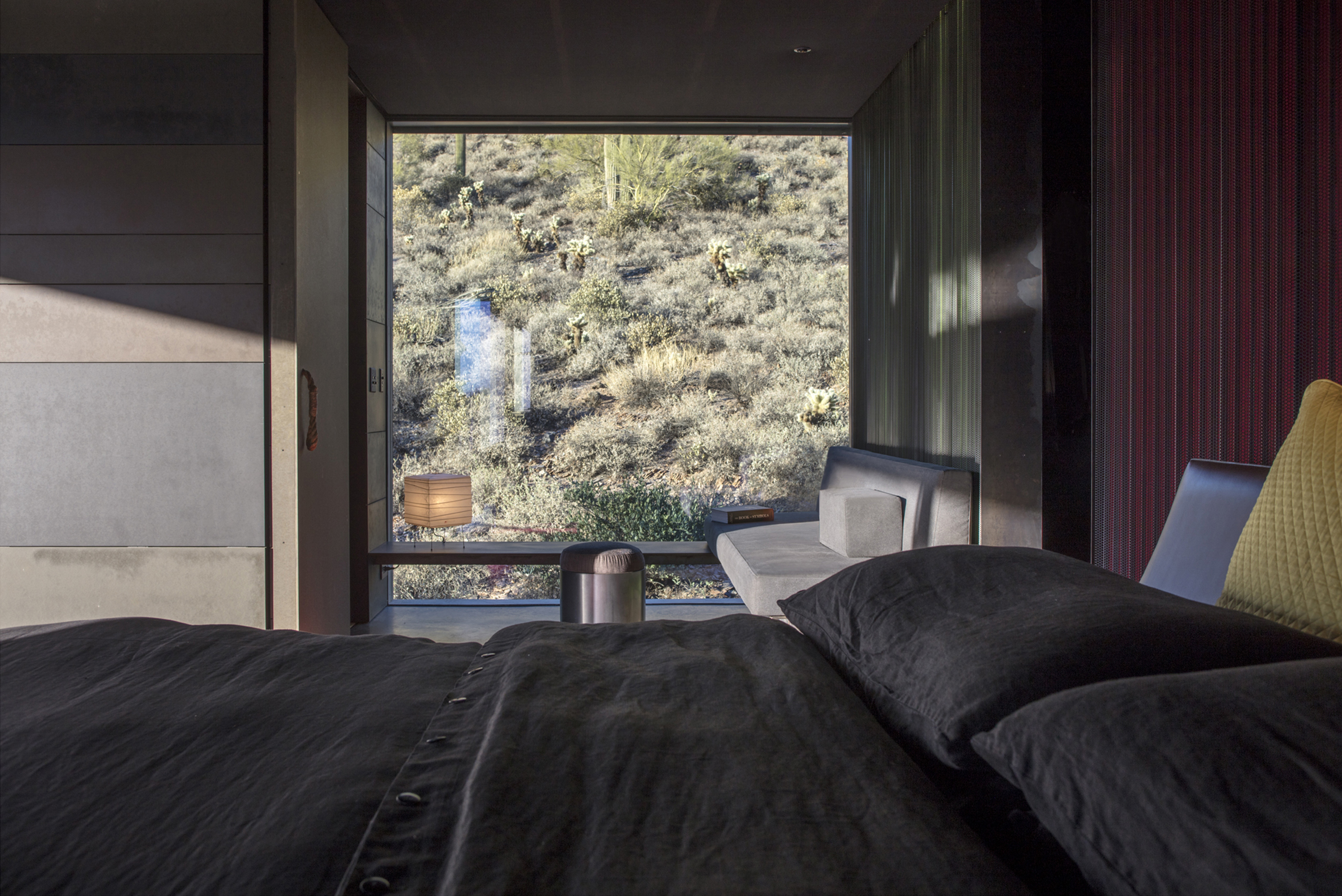


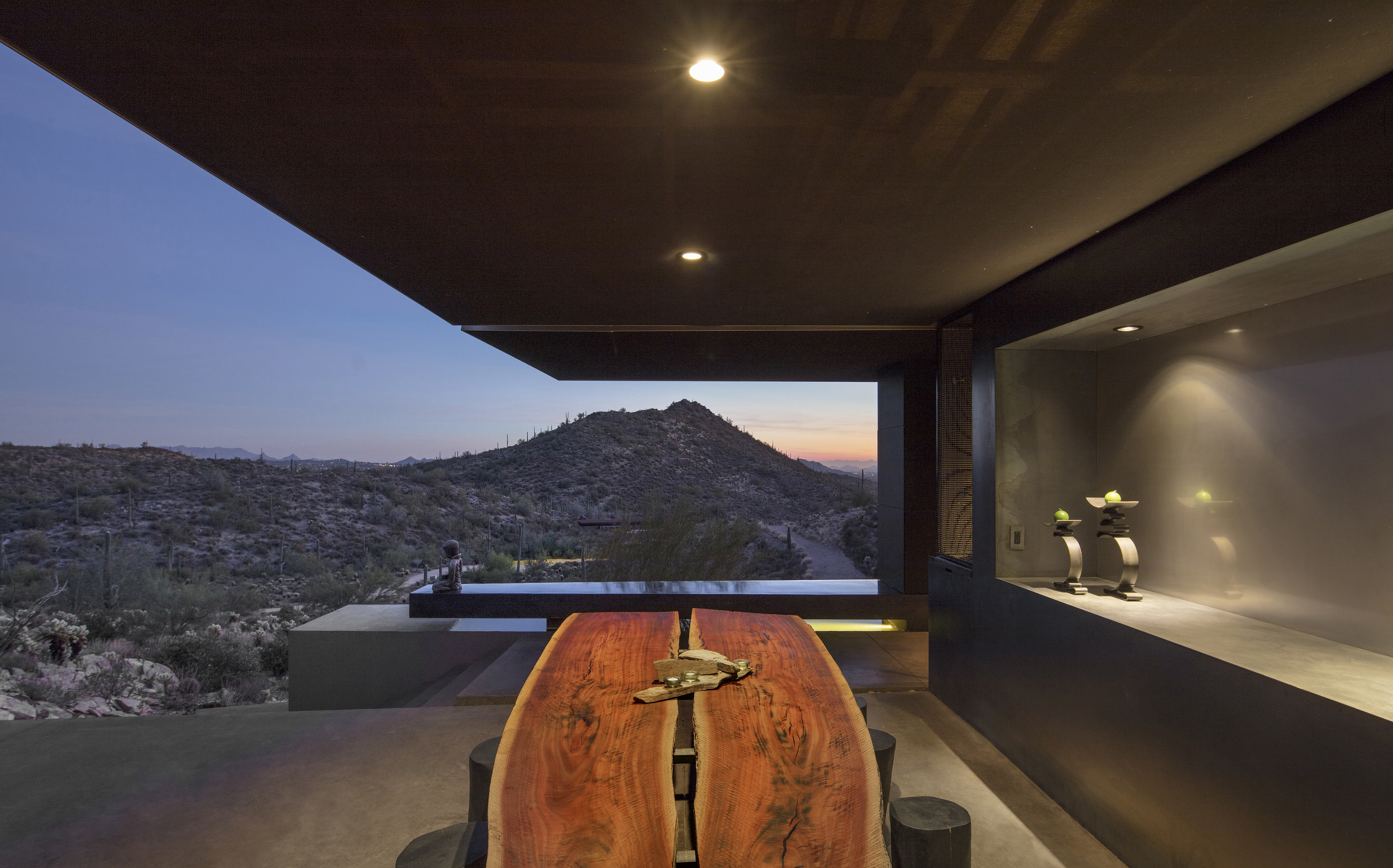
INFORMATION
For more information, visit the Wendell Burnette Architects website
Receive our daily digest of inspiration, escapism and design stories from around the world direct to your inbox.
Harriet Thorpe is a writer, journalist and editor covering architecture, design and culture, with particular interest in sustainability, 20th-century architecture and community. After studying History of Art at the School of Oriental and African Studies (SOAS) and Journalism at City University in London, she developed her interest in architecture working at Wallpaper* magazine and today contributes to Wallpaper*, The World of Interiors and Icon magazine, amongst other titles. She is author of The Sustainable City (2022, Hoxton Mini Press), a book about sustainable architecture in London, and the Modern Cambridge Map (2023, Blue Crow Media), a map of 20th-century architecture in Cambridge, the city where she grew up.
-
 The new Tudor Ranger watches master perfectly executed simplicity
The new Tudor Ranger watches master perfectly executed simplicityThe Tudor Ranger watches look back to the 1960s for a clean and legible design
-
 This late-night hangout brings back 1970s glam to LA’s Sunset Boulevard
This late-night hangout brings back 1970s glam to LA’s Sunset BoulevardGalerie On Sunset is primed for strong drinks, shared plates, live music, and long nights
-
 How Memphis developed from an informal gathering of restless creatives into one of design's most influential movements
How Memphis developed from an informal gathering of restless creatives into one of design's most influential movementsEverything you want to know about Memphis Design, from its history to its leading figures to the pieces to know (and buy)
-
 Step inside this resilient, river-facing cabin for a life with ‘less stuff’
Step inside this resilient, river-facing cabin for a life with ‘less stuff’A tough little cabin designed by architects Wittman Estes, with a big view of the Pacific Northwest's Wenatchee River, is the perfect cosy retreat
-
 Remembering Robert A.M. Stern, an architect who discovered possibility in the past
Remembering Robert A.M. Stern, an architect who discovered possibility in the pastIt's easy to dismiss the late architect as a traditionalist. But Stern was, in fact, a design rebel whose buildings were as distinctly grand and buttoned-up as his chalk-striped suits
-
 Own an early John Lautner, perched in LA’s Echo Park hills
Own an early John Lautner, perched in LA’s Echo Park hillsThe restored and updated Jules Salkin Residence by John Lautner is a unique piece of Californian design heritage, an early private house by the Frank Lloyd Wright acolyte that points to his future iconic status
-
 The Stahl House – an icon of mid-century modernism – is for sale in Los Angeles
The Stahl House – an icon of mid-century modernism – is for sale in Los AngelesAfter 65 years in the hands of the same family, the home, also known as Case Study House #22, has been listed for $25 million
-
 Houston's Ismaili Centre is the most dazzling new building in America. Here's a look inside
Houston's Ismaili Centre is the most dazzling new building in America. Here's a look insideLondon-based architect Farshid Moussavi designed a new building open to all – and in the process, has created a gleaming new monument
-
 Frank Lloyd Wright’s Fountainhead will be opened to the public for the first time
Frank Lloyd Wright’s Fountainhead will be opened to the public for the first timeThe home, a defining example of the architect’s vision for American design, has been acquired by the Mississippi Museum of Art, which will open it to the public, giving visitors the chance to experience Frank Lloyd Wright’s genius firsthand
-
 Clad in terracotta, these new Williamsburg homes blend loft living and an organic feel
Clad in terracotta, these new Williamsburg homes blend loft living and an organic feelThe Williamsburg homes inside 103 Grand Street, designed by Brooklyn-based architects Of Possible, bring together elegant interiors and dramatic outdoor space in a slick, stacked volume
-
 This ethereal Miami residence sprouted out of a wild, jungle-like garden
This ethereal Miami residence sprouted out of a wild, jungle-like gardenA Miami couple tapped local firm Brillhart Architecture to design them a house that merged Florida vernacular, Paul Rudolph and 'too many plants to count’